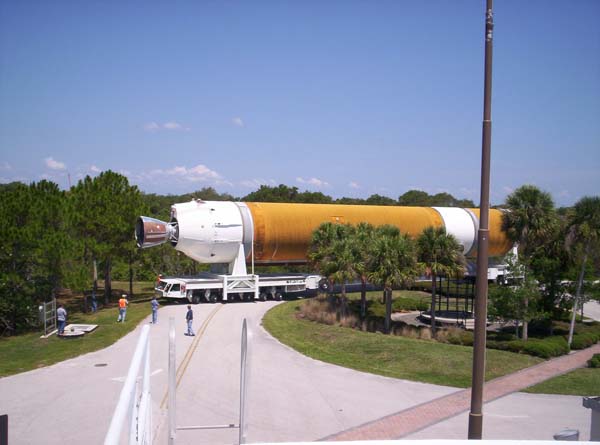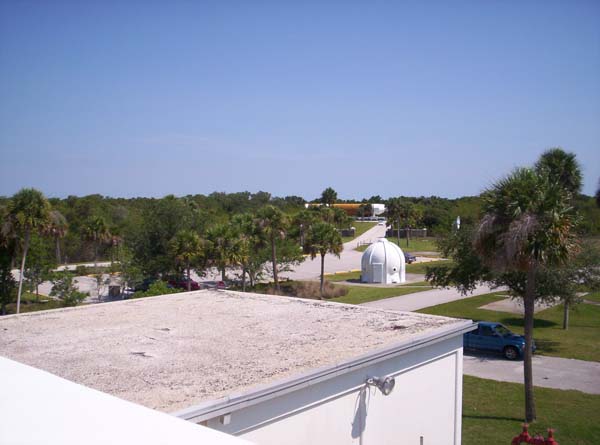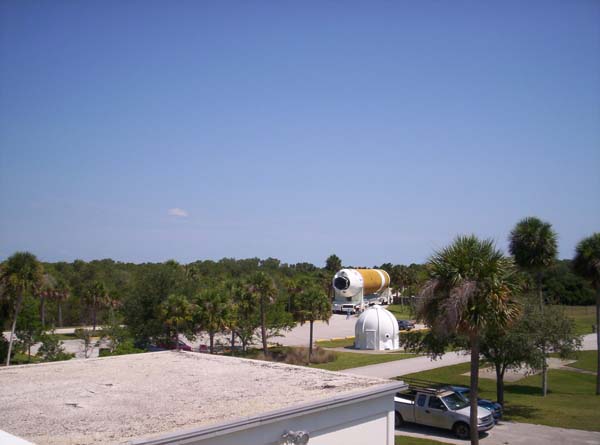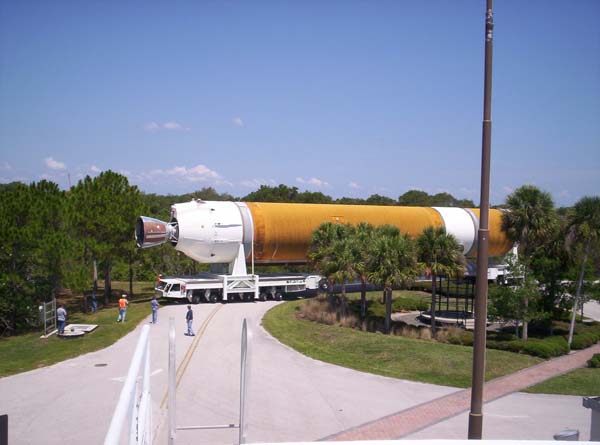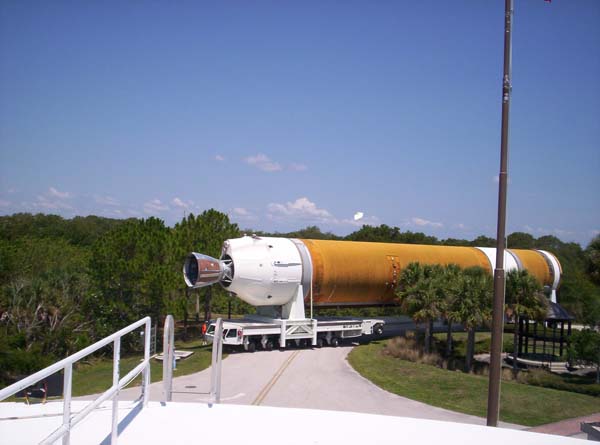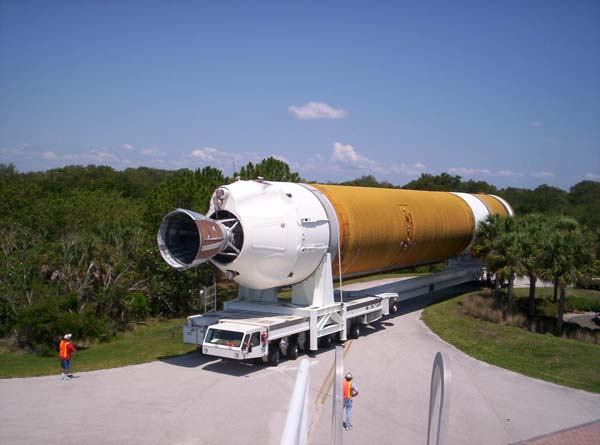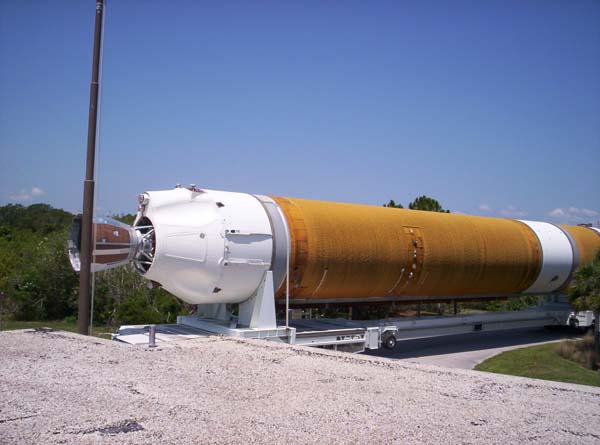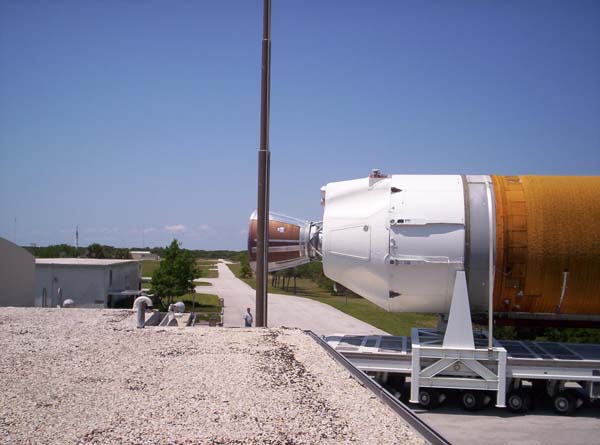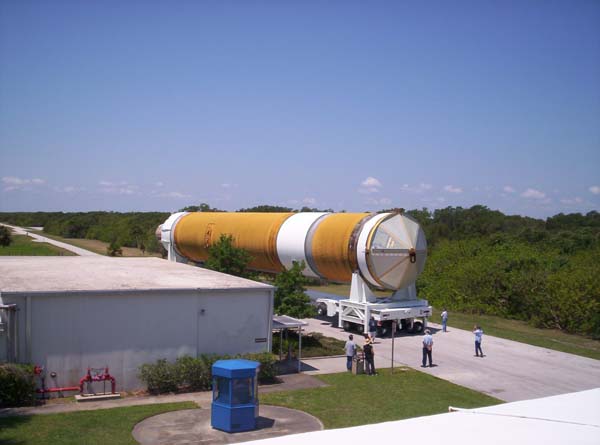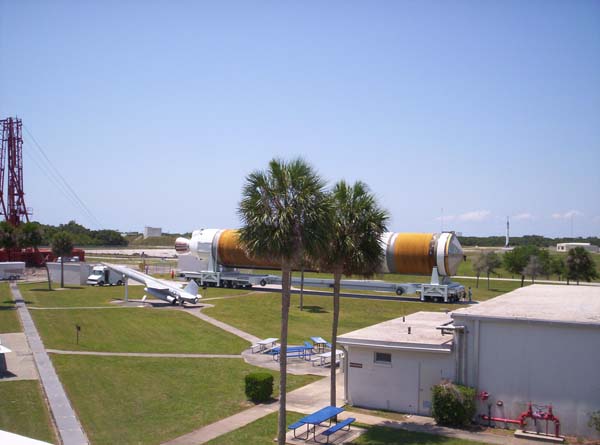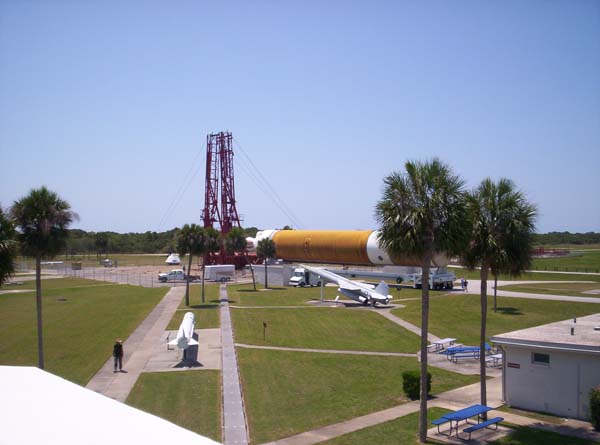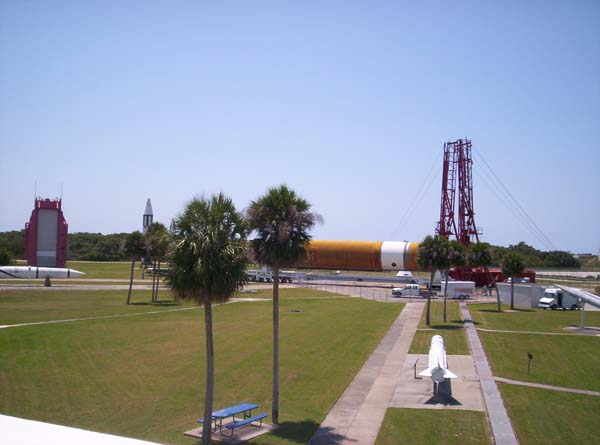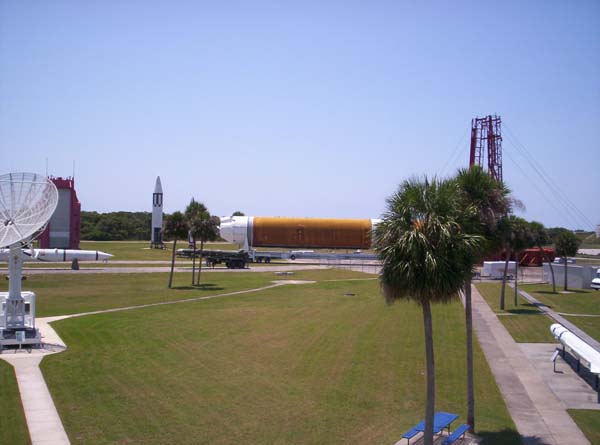
Transport Gallery
Overview
Display location:
History
The Static Fire Unit (SFU) was the first Common Booster Core (CBC) produced at the Delta IV Decatur Focus Factory. It is called the Static Fire Unit because an RS-68 liquid rocket engine (developed by Boeing Rocketdyne) was attached to the CBC and shipped to NASA’s John C. Stennis Space Center (SSC) in Stennis, Mississippi so the integrated CBC and liquid rocket engine could be tested in a static test stand.
The SFU is 150 feet (45.72 meters) long and 16 feet 7 inches (5 meters) in diameter. It weighs 67,000 lbs (30,390 kilograms).
It was erected in SSC’s Test Stand B. The Static Fire Unit was tanked 6 times and fired five times. All tests were successful. The last test on 6 May 2001, lasted 303 seconds, simulating a Delta IV Heavy configuration profile.
SFU Transportation
The SFU was removed from the SSC test stand on 24 May 2001 and placed into the Delta Mariner transport barge. It was transported through the Gulf of Mexico around the Florida Keys to Port Canaveral. The SFU arrived at Port Canaveral on 29 May 2001 on the Delta Mariner. SFU was offloaded by the Delta IV Cape Canaveral Launch Site Team and transported nine miles to the Horizontal Integration Facility (HIF) using the Elevating Platform Transporter. At the HIF, the SFU was used as a mechanical pathfinder to ensure the facility and ground support equipment was configured correctly to process a Delta IV vehicle.
On 22 August 2001, the Static Fire Unit was transported 1/2 mile to Space Launch Complex (SLC) 37 where it was again used for a mechanical pathfinder to ensure SLC 37 and its ground support equipment was configured correctly. Transported by the Elevating Platform Transporter the SFU was placed on the Fixed Pad Erector (FPE). The SFU was translated from the horizontal to vertical position using the FPE and placed on the launch table on 23 August 2001. Then the 330 foot tall Mobile Service Tower (MST) was moved around the vehicle and the platforms were configured to provide 360 degree access where it is required to process the vehicle.
The SFU pad pathfinder was extremely successful providing much information on the SLC 37 mechanical systems. The team exercised the FPE to ensure understanding of its operation and the load transfer system. They moved the Mobile Service Tower (MST) around the vehicle and verified platforms interfaced well with the SFU. Access platforms were installed to verify the team could process the vehicle for launch and remove and replace components if necessary. The Inert Solid Rocket Motor (SRM) was placed in each of the four possible positions and mated to the SFU.
Testing & Data
Frequency Identification Tests were performed to provide data for analysis. The Inert SRM was removed. During the lowering of the SFU, the FPE was instrumented to provide data for loads analysis. Data was taken with the FPE in different positions. Removal of the SFU verified the team could de-erect a Common Booster Core if weather, satellite or equipment problems made it necessary to do so. Many lessons were learned and the time it takes to perform tasks was validated.
After the team was through with its operations and measurements, they rotated the vehicle from vertical to horizontal and transported the SFU back to the HIF, on 15 October 2001, for staging until it was needed again. There were some plans to send the SFU to Vandenberg Air Force Base where the Delta team was modifying Space Launch Complex 6 for the Delta IV family of vehicles. However, the Vandenberg Air Force Base first flight vehicle was ready in time to use it for the mechanical pathfinder at their HIF and SLC. The Static Fire Unit remained at the HIF until it was donated to the Air Force Space and Missile Museum.
The Delta IV CBC was moved from parking storage at Complex 37 to the Air Force Space and Missile Museum on 9 June 2007 using the remarkable Elevating Platform Transporter.
